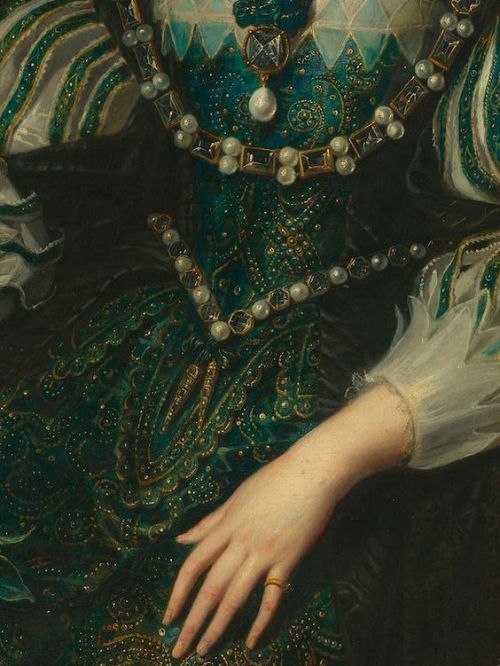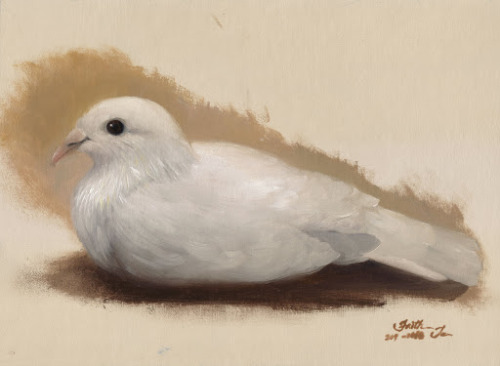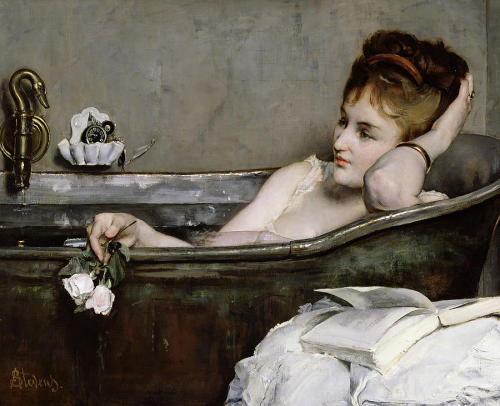#wiccawoman
Things I’ve learned so far in my witchcraft practice:
- Your intuition is your best friend; better to be wrong and safe than right and silent.
- Your digestion knows when something is off.
- Not everyone has to believe you, and not everyone is worth telling.
- Divination is here to guide you, not to define you.
- Protection. Cleansing. Protection. Cleansing. Protection. Clea—
- When you get in your own head, you get in your own way.
- Magick is science, psychology, intention, and unknowns.
- Tools are only focuses; you are all you need.
- There is energy in everything; atoms are moving all around us, each working together to keep the universe from unravelling. How bold of us to assume we aren’t able to witness that energy.
- Ask for permission, not forgiveness; your sister may forgive, but the earth may not.
- Even if this is all bullshit (it isn’t, in my experience), it’s fun, and laughter is the best medicine.
- Aloe for burns and antibiotics for infections.
- “Let other men go to war; Protesilaus must love.”
- You don’t owe your time, energy, or resources to anyone else, but sharing is often rewarding.
- Some information is too valuable to give away; charge for the things you cherish; keep the things you need.
- Be respectful of everything. I mean everything.
- Research, research, research!
- Sometimes the aesthetic is half the fun.
- Your blood, your bones, your sweat, your tears; they are all deeply a part of you so long as you’re tied to your body. They belong to you for a while, but they’re on loan; use them wisely.
- Know your present place; know your potential; they are not the same thing.

If anyone is interested, check out my Samhain printable guide!
Remember to get a good nights rest and to do your shadow work before you sleep as well as put out your candles you lovely lovely being
G’night
And may you remember your dreams
and hopes
and asipirations
as your soul connects to the moon
and you’ll wake up with the best feeling
that your alright,
and lil pieces of yourself still in space
making harmony with the sky
you had a long day, you did what you could, celebrate it *mwah*
G’night
-Z
Just about every religion incorporates sacred objects into its observance and practice. Whether it’s special vestments worn by religious officiants, statues of deities honored at shrines, candles, amulets, chalices or other symbolic items, people have been creating and utilizing physical artifacts—or “tools”—in order to create and maintain spiritual energy and focus in their ritual practices.
Athame: Used for directing energy and casting rituals
Wand: Used to direct energy and casting circles
Chalice: Used to hold ceremonial drink
Boline: Used for rituals and harvesting/cutting herbs
Incense: Used to cleanse
Censer: Used to burn incense pods
Scourge: Was used to whip witches as initiation into covens but now is used in some ritual poses by the Priestess and Priest when they do the “Osiris” pose with their arms crossed in front of their chests holding the athame and the scourge.
Cingulum: Used like a belt, can symbolize ranking via color, but is mainly used to measure the circle for casting
Besom: Used to sweep negative energies
Cauldron: Used to burns herbs and incense, can be used to make spells
Jewelry: Used upon intention, ex. pentacles on necklaces for protection and ring magick.
Spear: Used as a ritual tool for Odin
Stang: Used for directing energy and assistance on spiritual path
Bell: To stop and start a ritual
Offering Dish: Used to offer our offering to our deities
Hat: Symbolizes the witch herself and her knowledge, fedora like hats are used more often to give off the same look
Crystals: Can be used for healing and magick, each crystal has a different property
Oils: Used for spells and baths
Resin: (Pine) used to wake the circle
Mortar and Pestle: Used to grind up herbs
Rune Sticks: Used by oracles, usually thrown and read
White Stick: Grants invisibility and protection
Silver Spoon: Used to dig up dirt
Scrying Mirror/Bowl: Used to receive visions and messages
Gazing Ball: Used to scry as well
Hollow Glass Orbs: Used to ward off the home of witches spells, evil spirits, and ill fortune
Pendulum: Used for divination
Witches Spoon: Special spoon used for tea
The Garter: Used by high priestess to symbolize the head of the coven and her level
Skull: Used for protection and used to call the ancestor of which the skull belonged to (can be replaced with a handful of soil)
Talismans: Used to symbolize what we want to push towards, also protection
EDIT:@twilightmagick said this and i completely forgot to add it in at the bottom YOU DONT NEED TOOLS AS A WITCH you are the magick, tools only serve to help you out and please don’t buy new tools they can be expensive go to your local thrift or you can make your own tools if you so please but yeah thank you to the person that pointed this out
Eros: The Desire

Eros was the Greek god of love, or more precisely, passionate and physical desire. Without warning he selects his targets and forcefully strikes at their hearts, bringing confusion and irrepressible feelings or, in the words of Hesiod, he ‘loosens the limbs and weakens the mind’ (Theogony, 120). Eros is most often represented in Greek art as a carefree and beautiful youth, crowned with flowers, especially of roses which were closely associated with the god.
Eros – known as Cupid to the Romans – was the Greek god of sexual attraction, a constant companion of Aphrodite. Variously depicted as either a beautiful youth or a mischievous nude boy, Eros is most commonly represented with a bow and an unlimited number of arrows which he uses to overpower the reason and incite erotic feelings in any mortal or god per Aphrodite’s or his own wish. Once, though, he accidentally scraped himself with an arrow – and that’s how he fell in love with Psyche, who will later become his wife for eternity.
The first of these is Hesiod’s Eros, a primordial being, “the most beautiful of the immortal gods,” one of the very first few deities that sprung into existence. In this story, Eros was the son of Chaos, and the brother of Gaea, Tartarus, Erebus, and Nyx. A universal cosmic force, he became Aphrodite’s companion soon after her birth, which he had previously overseen.
However, possibly due to the fact that Eros was constantly accompanying the goddess of love, later authors reimagined him as one of the many children of Aphrodite and Ares. In this case, there are at least three more winged love gods such as him, all of them his brothers: Anteros, Pothos, and Himeros. Together, they are often referred to as the Erotes.
Remember to get a good nights rest and to do your shadow work before you sleep as well as put out your candles you lovely lovely being
G’Night
Look at you darlings,
You finished your day,
How proud are you,
I’m sure you did the best job,
rest your little eyes,
and await for apollo,
to raise the sun again,
in his chariot of pure gold,
just like your heart,
your doing great, im so proud of you *mwah*
G’night
- Z
The Wheel of the Year is a diagram of the Sabbats celebrated in Paganism, equinoxes are included here as well.

Yule: Celebrated at the Winter Solstice, Yule is the celebration of the Goddess giving birth to the God.
Imbolc: Celebrated on February 2, it is the time when the first plantings of spring crops occur. It is also considered to be a time of spiritual cleansing and renewal of vows.
Ostara: Celebrated at the Spring Equinox in March, this sabbat represents a new beginning partly because it marks the beginning of longer days and shorter nights. It also marks the union of the God and Goddess and therefore symbolizes fertility.
Beltane: Celebrated on May 1, it represents the end of the planting season and the beginning of harvesting. It also represents fertility, as the celebration often involves loosened rules for fidelity.
Litha: Celebrated at the Summer Solstice, this sabbat represents the peak of the God’s strength. It may involve lighting large bonfires to ward off evil spirits.
Lammas: Celebrated on August 1, this is a time when the Goddess turns over control to the God. It is a time of feasts and craft festivals.
Mabon: Celebrated at the Autumn Equinox, Mabon represents the balance between light and dark, as it is the day that nights start becoming longer than days. It is officially the Pagan day of Thanksgiving.
Samhain: Celebrated on Halloween, Samhain means the end of summer and the beginning of winter. On this night, the dead are said to be able to communicate with the living in order to be with and celebrate with their families.
Other depictions include the Celtic Wheel of the Year with each holiday being represented by a rune.
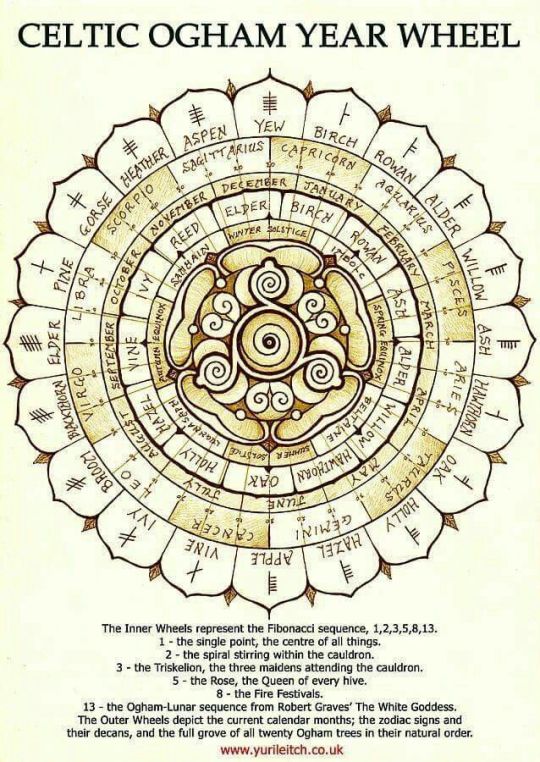
What are cycles that you find yourself in that you want to change? What steps can you do to change that cycle? And finally how will your life be better once you alter those cycles?
I am worthy
I love life
I deserve the best life
I am a magnet of miracles
I am grateful and blessed
Chaos: The Void
I’ll be going through the greek pantheon first in order of family tree and then other pantheons later on
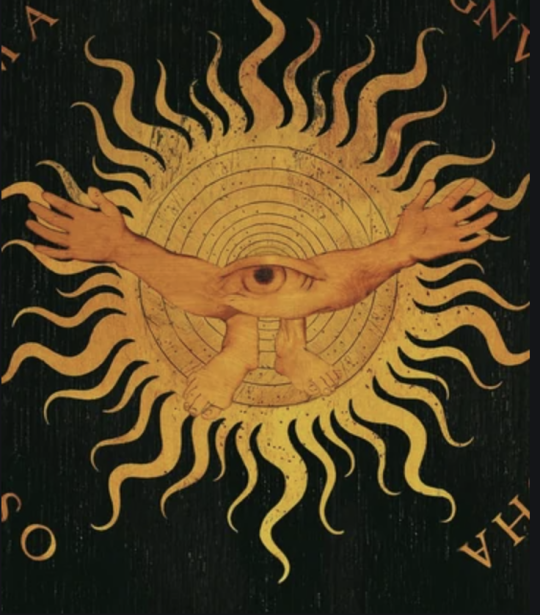
Chaos was the origin of everything and the very first thing that ever existed. It was a primordial void, which everything was created from including the universe and the Greek Gods. In ancient Greek, Chaos is translated as ‘the gaping void.’
In the beginning, Chaos was a state of random disorder existing in primordial emptiness, and soon later a Cosmic Egg formed in its belly and it hatched producing the first deities into the darkness. Chaos was often thought of to be female, possessing both anthropomorphic and tangible qualities however this interpretation changed as the mythology evolved according to different historians and poets. The far-reaching idea is that Chaos is a space that separates and divides the Earth and the Sky.
And Middle Hand Path.
For witches, a question that can get often asked is what path you’re on, usually the answers being a Left Hand Path (LHP), Right Hand Path (RHP), Middle Hand Path (MHP) or you simply just say “I don’t know.” If you don’t know what these terms mean, I listed them below and will further explain them. These terms are not void of controversy and bias, however.
The Left Hand Path
The left-hand path is considered to be about the elevation and centrality of the self as well as the rejection of religious authority and societal taboos.
The left-hand path focuses on the strength and will of the practitioner. It downplays the need for intercession by any high power although some may believe that a higher power exists.
Satanism (both LaVeyan and Theistic) and Luciferianism are considered left-hand paths. Followers of Thelema disagree whether it is a left- or right-hand path.
The Right Hand Path
The right-hand path, in the words of left-hand path follower Vexen Crabtree, “concentrate[s] on the symbols of goodness, of the sun, of herd mentality and submission to god(s) and religious authority."
To put it a little more diplomatic, the right-hand path can be thought of as one of dogma, ritual, and a belief in the community and formal structure as well as a higher power. Though each of those can also be found in left-hand path religions, there is less focus on indulging the self in the right-hand path.
The vast majority of religions are considered part of the right-hand path, from Christianity to Wicca.
In my own words…
Usually the left hand path is viewed as “bad” and right viewed as “good.”
With your LHP being demons, Lucifer, Hades, Anubis, satanism, and black magick
And your RHP being angels, Apollo, Archangels, Ra, and white magick
Yin and Yang type situation.
Limitations and Biases
One very large limitation of this terminology is that it is primarily used by followers of the left-hand path. Satanists commonly describe their path as that of the left-hand. However, Christians, Jews, Wiccans, Druids, and the like do not identify themselves as being of the right-hand path. As such, definitions of the right-hand path tend to be phrased in fairly derogatory terms as Crabtree demonstrated.
The Origin
The terms left-hand and right-hand paths in Western occultism is commonly attributed to Theosophy founder Helena Blavatsky, who borrowed the terms from Eastern practices.
The West has a history of associating the ‘right’ with goodness and correctness and the 'left’ with inferiority.
The left side of a shield is known as the sinister side, which is based on the Latin word for "left.” This later became associated with evil and maliciousness.
Middle Hand Path
Both the left hand path and the right hand path can often have extremists and see things in linear shades of black and white if they aren’t looking deeper.
Middle path is about moderation and about having empathy to understand who is next to you. Anything in excess will have a negative effect. While spirituality and occult can be helpful, we need money to buy the clothes we wear, pay the internet we view this on etc.
It’s all about moderation and also seeing things objectively. To view the world in black and white can be rather limiting. Every story changes depending on who tells it.
Sources:
https://www.learnreligions.com/left-hand-and-right-hand-paths-95827
Just a daily reminder to drink water, eat food, take your meds and go drink some tea
G’Morning,
Look at you,
Wonderful starseed,
Wholesome soul,
Wise spirit,
Immortalized in constellations
like the divine beings you are
for the celestials are always there
watching you flourish
I love you all my stars *mwah*
G’Morning
- Z
Here’s a list of different types of witches, this is a pretty chunky list but it’s not all and as I remember more and more and learn about more of them, I’ll add more of them onto the list but for now, here ya go:
There are many types of witches, many of which can change throughout one’s journey, it’s important to know which path is which and how that affects us and others.
Atheist/Laveyan Satanic: Witchcraft worked with the idea that satan is a concept, rather than a real person or entity (loosely put; it’s a very detailed concept). Also known as Satanic witches who fit the secular description.
Alexandrian: holds that all participants are priests and priestesses; everyone is able to commune with the Divine, therefore there is no laity.
Augury:Divine omens, signs and symbols
Celtic: Studies and worships Celtic deities and magick
Cosmic: Looks to the stars, moon, and astrology
Christian: Witchcraft that is performed to honor / or is performed in conjunction with the Christian God as the primary and only deity
Correllian: practices based on the idea that inner truth is universal in nature. Since Corellian Witchcraft teaches that Deity enters the life of the seeker in a way that can be best understood by them, Deity is key to the beneficial magic of this tradition.
Crystal: Uses crystals and their properties
Dianic: Offshoot of Wicca focused on female deities
Divination: Used tarot cards, I Ching tools, etc for divination
Druids: promotes harmony, connection, and reverence for the natural world.
Eclectic: Embraces any and all magick and magickal work
Elemental: Works with fire, water, air, earth, and spirit
Faery: Based on British folklore and works with the Fae
Gardenian: based on the polarity of a male and a female, which are represented in covens by the High Priestess and High Priest. The values being: the value of life, the inevitability of death, and the reincarnation after this life ends.
Green:Magic based on gardening and herbalism
Hearth: Practices magick focused on the home
Hedge: Solitary practitioner, a herbalist
Hellenic: Worships Greek gods and goddesses
Hereditary: Handed down a bloodline of witches
Kitchen: Likes to mix food and cooking with magick
Lunar: Works with the lunar cycles
Norse: Based on the religion of Scandinavia
(Theistic) Satanic: Witchcraft that is often centered around honoring and/or working with satan in spellwork and prayer
Science: A form of magick in which both metaphysical ideas and scientific facts/theories are mixed in together by the individual practicer
Sea:Practices water based magick
Secular: Does not worship deities
Shaman:Enters altered state of consciousness
Solitary: Practicing by ones’ self; not included in a group
Traditional: One who practices witchcraft by honoring and using old and ‘traditional’ ways of magick; this type of witch might be one to practice modern methods of magick, but they might also stick to traditional concepts or techniques
Wicca:Modern pagan
Write a letter to yourself, forgiving yourself of all the things you did but don’t like dwelling on, and apologizing to your younger self for not treating your mental wounds like you would physical, then write about what you’re going to improve about yourself, stick to it.
Casting Circles is very important for baby-witches to learn for protection and in general for spells, but before preforming any spells please make sure you know how to cast a circle.
What is a circle, and why does it matter?
A circle is often a barrier that houses your spells and rituals. By casting a circle, you’re allocating energy to protect you from any unwanted or negative outside influences. There are a lot of formal ways to begin a circle and some informal.
It’s important to note that there are many ways to cast a circle.
In traditional witchcraft, you might call upon a god or goddess, while if you’re a secular witch, you might call upon the elements, or create a wall of your own energy. A circle isn’t mandatory, but it can significantly assist with protection and energy.
How to cast a circle
Always begin by cleansing your space. You can either use your mind to mentally push out, use incense to burn away or use a broom or besom to sweep away. Once you have your method for cleansing your space, it’s time to define your circle. To define your sacred circle, it’s important to take your space and location into consideration. Are you in your bedroom? Bathroom? Or outside? You can make your intended circle as large or as small as you’d like. You can mentally define your circle or mark the directions or elements with candles or crystals. If you’re using the four elements, you can create a cross shape. If you’re using the five elements, you can create a pentacle shape.
To cast a circle by calling upon the elements, begin facing the east. This is home to the element of air. When you move clockwise, you’ll end facing North where you can begin your ritual or spell work. Stand in your intended circle as you begin to relax and focus on your breathing. Take as long as you’d like at this step or until you feel calm, centered, and present.
What to Do/Say
Begin by envisioning the wind whipping around you and get really in tune with the element of air and say: “Element of air, I call on you.”
Moving clockwise, turn to the south. Envision crackling flames and the warmth of the sun. Once you are in tune with fire, say: “Element of fire, I call on you.”
Turn to the west. Envision flowing water in waves and waterfalls and streams, possibly moving around your body. When you feel attuned with water, say, “Element of water, I call on you.”
Turn to the North. Conjure up the scent of the earth after it rains. Imagine the silence and darkness of a cave and the rooted feeling of being barefoot on the earth. When you feel attuned, say, “Element of earth, I call on you.”
Still facing North, become aware of your feet and send a column or roots of light deep into the core of the earth. Bring this energy up from the center of the earth and into your body and visualize a white light flowing, creating the circle and say: “With these elements together under spirit, I cast a circle of protection above, below, within.”
This is where you perform your ritual, meditation, or spells.
You can also temporarily exit your circle without repeating the entire circle casting process. To do so, hold an athame or wand in your hand and make a cutting motion across the line of the circle and say: “I use this athame of crystal to open a door.” Your wand or athame will help you direct energy to make an incision in your circle of energy. When returning, you can simply reverse the process to close the door.
Opening a circle
Also called closing a circle is a way to release the energy you’ve built and is a way to thank the elements for their assistance.
The process of opening a circle begins with you facing north to release earth and saying: “Earth, thank you for your energy. I bid you farewell.”
Next, you’ll turn to the west to release water: “Water, thank you for your energy. I bid you farewell.”
Then, you’ll turn to the south to release fire: “Fire, thank you for your energy. I bid you farewell.”
After that, you’ll turn to the east to release air: “Air, thank you for your energy. I bid you farewell.”
Finally, you’ll return back north to release spirit and the circle by saying: “Spirit, I bid you farewell. I open this circle and release the energy back into the earth.”
Other popular phrases for circle casting and opening:
“The circle is open, but never broken. The love of the deity name is forever in my heart.”
“Merry meet, and merry part, and merry meet again.”
“I thank you, element of name for lending your energy tonight. I bid you farewell.”
“I call the Guardian of direction and the element of element to watch over this sacred circle.”
Sources:
https://medium.com/@ambrosiahawthorn/how-to-cast-a-circle-of-protection-8defbaacd575
The links to Centering and Grounding are here: GroundingCentering
Shielding is a way of protecting yourself from psychic, mental, or magical attack—it’s a way of creating an energy barrier around yourself that other people can’t penetrate.
When you shield, you envelope yourself with your energy. Focus on your energy core, and expand it outward so that it covers your entire body. Ideally, you’ll want it to extend past the surface of your body so that it’s almost as though you’re walking around in a bubble.
When you’re forming your energy shield, it’s a good idea to visualize the surface of it as being reflective. This not only protects you from negative influences and energy, but it can also repel them back to the original sender. If you’re someone who is often affected by the emotions of others—if certain people make you feel drained and exhausted by their very presence—then you need to practice shielding techniques.
Sources:
https://www.learnreligions.com/grounding-centering-and-shielding-4122187
The link to my post about centering and shielding are here: CenteringShielding
Sometimes, if we fail to center properly before a ritual, we can end up a bit off-kilter. In other words, you’ve gone and amped up your energy level, it’s been increased by magickal working, and now you’ve got to burn some of it away. This is when the practice of grounding comes in very handy. It’s a way of getting rid of some of that excess energy you’ve stored up. Once this is done, you’ll be able to regulate yourself and feel normal again.
Grounding is fairly easy. The same way you manipulate energy when you learn to center, that’s what you’ll do to ground—only instead of drawing that energy inside you, you’ll push it out, into something else. Close your eyes and focus on your energy. Get it under control so that it’s manageable—and then, using your hands, push it into the ground, a bucket of water, a tree, or some other object that can absorb it.
Some people prefer to fling their energy into the air, as a way of eliminating it, but this should be done with caution—if you’re around other magically inclined people, one of them may inadvertently absorb what you’re getting rid of, and then they’re in the same position you’ve just been in.
Another method is to push the excess energy down, through your legs and feet, and into the ground. Focus on your energy, and feel it draining away, as though someone had pulled a plug out of your feet. Some people find it helpful to bounce up and down a bit, to help shake out the last of the excess energy.
Sources:
https://www.learnreligions.com/grounding-centering-and-shielding-4122187
Centering is VERY important and it is essential that every witch knows how along with grounding and shielding which posts are coming up next and can be found here: GroundingShielding
Centering is the beginning of energy work, and if your traditions’s magickal practices are based upon the manipulation of energy, then you’ll need to learn to center.
If you’ve done any meditation before, it may be a bit easier for you to center, because it uses many of the same techniques. Do keep in mind that each tradition has their own idea of what centering is. It’s a simple exercise but if a certain tradition views it differently, modify accordingly.
Find a place where you’re undisturbed, remove any distractions (turn off your phone, lock the door, etc), you should perform this sitting up to avoid the chances of falling asleep. Once seated, take a deep breath and exhale, do this a few things until you are breathing evenly and regularly. This will help you relax. Some people often find it easier to regulate their breath when counting or chanting things like “Om.” as they breathe. The more often you do this, the easier it’ll become. Once your breathing is regulated it’s time to focus on your energy. Rub your hands together until they feel warm and pull them apart by a couple inches. You should feel a charge, a tingling sensation between the palms. That’s energy. If you don’t feel it at first you can try again until you notice that little space between your palms feels different.
Once you’ve mastered this and can tell what energy feels like, you can begin to manipulate it. That means you can focus on that area of resistance. Close your eyes and feel it. Imagine the energy expanding and contracting, like a balloon. Some people believe you can try pulling your hands apart, that way stretching the energy out like taffy with your fingers. Try visualizing the energy expanding to the point where it surrounds your entire body. After some practice, according to some traditions, you’ll be able to toss the energy hand to hand like a ball. Bring it into the body and draw it inward, shaping the ball of energy inside yourself. It’s important to know that this energy (in some traditions called aura) is around us at all times, we are not creating something, rather, we’re manipulating it.
Every time you center, repeat this process, and eventually you’ll be able to control it completely. The core of your energy can be wherever it feels most natural to you, for most it’s ideal to keep it around their solar plexus chakra and for others, the heart chakra.
After you’ve done this for a while, it’ll become second nature and you can initiate this anywhere you want. This way you’re developing a foundation for energy work in many different magickal traditions.
Sources:
https://www.learnreligions.com/grounding-centering-and-shielding-4122187
The Moon, Phases, and Types
When practicing magick, it’s helpful to observe the moon and its phases. Each phase of the moon influences what spells and rituals work better. This also includes special moons like the Blue Moon, Blood Moon, etc. etc. You can keep track of the phases by using a moon tracker online, do your magick accordingly.
Full Moon
- Love Magick
- Charging
- Healing
- Banishing
- Cleansing
- Clarity
Waxing Gibbous
- Motivation
- Attraction
- Success
- Good Health
First Quarter
- Creativity
- Divination
- Motivation
- Calming
- Strength/Growing
Waxing Crescent
- Constructive Magick
- Attraction
- Wealth/Success
- Luck
- Friendship
Dark Moon
- Deconstructive magick
- Curses
- Banishings
- Soul Searching
- Divination
Waning Crescent
- Balance
- Success
- Attaining wisdom
- Atonement
- Illness
Last Quarter
- Breaking bad habits
- Relinquishing
- Breaking curses
- Banishing
Waning Gibbous
- Relinquishing
- Undoing bindings
- Cleansing
- Undoing curses
Lunar Eclipse
- Any of the magick listed
Blue Moon
- Rituals
- Protection
- Guidance
- Power boost
- Divination
- Light Magic
- Obtaining goals
- Positive change
Blood Moon
- Ridding oneself of bad habits
- Spirit Conjurations
- Healing
- Protection
- Manifestation
- Balance
- Transformation

